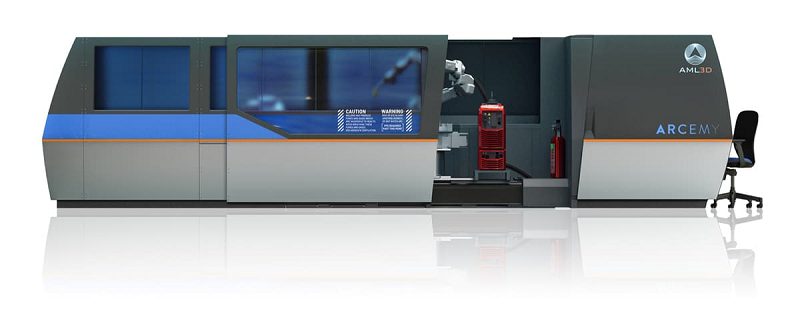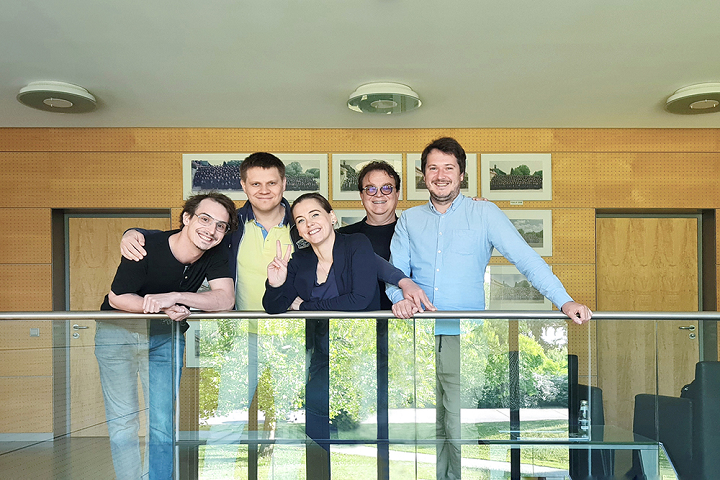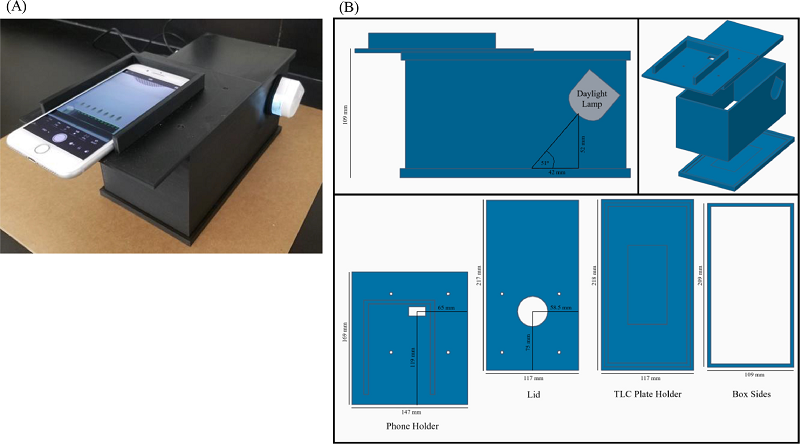Our #TECH_Newser covers ‘news of the day’ #techNewserTechnology content.
| cutline • press clip • news of the day |
3D Printing News Briefs, August 6, 2022: Business, Aerospace Accreditation, & More – 3DPrint.com | The Voice of 3D Printing / Additive Manufacturing.
In today’s 3D Printing News Briefs, SLM Solutions has announced multiple new appointments to its management board, and AML3D has begun implementation of an important aerospace accreditation. Anisoprint is partnering with Jacobs University in Bremen to create a 3D printing ecosystem. Finally, researchers used a smartphone and 3D printed light box to combine thin-layer chromatography with image analysis for intramuscular medroxyprogesterone acetate identification.
SLM Solutions Announces Management Board Appointments
First up, SLM Solutions Group AG announced that its Supervisory Board has made multiple appointments to the company’s management board, starting with Charlie Grace, who was also appointed as the Chief Commercial Officer. Grace joined the company as Chief Sales Officer in early 2021 and helped to transform the sales organization and North America Region, and will now oversee SLM’s global commercial activities, including business development, commercial strategy, and marketing. In addition, he will remain the General Manager for North America. SLM also announced that Gerhard Bierleutgeb, who joined the company in 2020 as Executive Vice President (EVP) of Global Services and Solutions, will be taking the role of Chief Operating Officer.
“On behalf of the entire Supervisory Board I would like to extend my congratulations to Charlie on his new leadership role and wish Sam, Dirk and Charlie all the best in guiding SLM into a successful future,” said Thomas Schweppe, Chairman of the Supervisory Board.
“It’s individuals like Charlie and Gerhard who help us as an organisation and implement our strategy with vigour making SLM a key enabler of our customers’ successful transition to additive manufacturing.”
AML3D to Implement AS9001D:2016 Accreditation

AML3D Limited announced that it will begin implementation of AS9100D:2016 accreditation for Aerospace Quality Management Systems for its proprietary Wire Additive Manufacturing (WAM) technology. This is one of the highest levels of certification that can be achieved by manufacturing companies that produce parts and components for flight structures, or “fly parts,” used in the aviation, defense, and space sectors, and will prepare AML3D for further expansion into the aerospace industry, per its growth strategy. Once this accreditation is fully implemented, which is expected to be done in the second half of 2023, AML3D says it will be only the second wire feedstock AM company in the world to achieve the standard, which will obviously give it a leg up when bidding for contracts. It will cost about $25,000 to complete the process, using money from AML3D’s recent capital raising round, and once implemented, will demonstrate that the company has achieved a benchmark consistent performance and service that exceeds customer, regulatory, and statutory requirements.
“Implementation of AS9100D certification will further demonstrate AML3D’s commitment to delivering the highest quality components into the aviation, space and defence industry,” said Andrew Sales, AML3D’s Managing Director. “This is an important step in our growth strategy for the company as we pursue high value contracts for aerospace. We are excited to further progress into the aerospace industry with our technology, further validated by this certification.”
Anisoprint, JUB Partner to Set Up Campus 3D Printing Ecosystem

Anisoprint team visiting Jacobs University Bremen
Luxembourg startup Anisoprint is partnering with Jacobs University Bremen (JUB) in Germany to set up an on-campus composite 3D printing ecosystem in order to foster education, research, and technology transfer. Anisoprint specializes in 3D printing continuous fiber-reinforced plastic parts that can replace metal in aerospace and engineering applications, and will set up a research environment, focused on its proprietary Continuous Fiber Coextrusion (CFC) technology, on the campus of JUB, which is part of the global Schaffhausen Institute of Technology (SIT) ecosystem. As part of the signed agreement, Anisoprint will relocate its R&D team to a lab on campus, where they will work to improve processes and design methods, develop new materials, and contribute to educational and technology training for students through thesis projects and internships.
“This agreement marks the beginning of a long-term collaboration in research, teaching, and knowledge transfer in a highly innovative and disruptive technology environment. It is a milestone in the path of Jacobs University in its ambition to become one of the Top 15 global young universities with a focus in key areas such as Data Science for Business, Quantum Computing and Technologies, Advanced Materials, and Modeling of Complex Systems,” said Professor Fabio Pammolli, President of Jacobs University Bremen. “Additionally to the educational benefits, it brings great value to the whole economic area of Bremen.”
Researchers Combine Thin-Layer Chromatography with Image Analysis to Identify MPA

Setup of the iPhone positioned on the light box for capturing images of a TLC plate (A) and structural design of the main components that comprise the light box (B).
Finally, the most widely used injectable contraceptives in the world are intramuscular medroxyprogesterone acetate (MPA) products, so accurate quality screening is critical for confirming safe, effective medications. A team of researchers from FHI 360, a nonprofit human development organization that works to improve lives by advancing integrated, locally driven solutions, and the Campbell University College of Pharmacy and Health Sciences, published a paper about their method of MPA identification. The team combined thin-layer chromatography (TLC), which is used to separate non-volatile mixtures, with image analysis to test and validate two brands of MPA injectables. They used an iPhone camera, open source ImageJ software, and a 3D printed light box for the image analysis, which seems like it could be a simpler, more cost-effective way to analyze pharmaceuticals—this could be extremely helpful in lower-income countries. An Ender Creality 3 Pro and black PLA were used to print the light box, which was used to, as the researchers wrote, “securely orient the smartphone and light source while blocking extraneous environmental light.”
The abstract states, “The TLC procedure used was based on the identity test found in The International Pharmacopoeia’s Medroxyprogesterone injection monograph. Spots produced on the TLC plates were then photographed using a smartphone camera and quantified using ImageJ’s image analysis software. The pixel data collected from each plate’s standard spots were compared to the data generated from its sample spots. Data sets collected across multiple TLC plates and numerous days of method performance were evaluated to assess linearity, accuracy, precision, specificity, and robustness. Across the range of 75–125% of the target concentration, the method was found to have linearity of standard spots (with R2 generally greater than 0.99), overall accuracy of 101.0% (4.1% RSD), repeatability pooled standard deviation of 2.44%, intermediate precision pooled standard deviation of 3.68%, and observed demonstration of specificity and robustness. In low and middle-income countries (LMICs), quality screening of pharmaceutical products like MPA injectables can be challenging when testing resources are expensive, difficult to procure, or complex to utilize.”
Subscribe to Our Email Newsletter
Stay up-to-date on all the latest news from the 3D printing industry and recieve information and offers from thrid party vendors.
‘News of the Day’ content, as reported by public domain newswires.
Source Information (if available)
It appears the above article may have originally appeared on 3dprint.com and has been shared elsewhere on the internet, repeatedly. News articles have become eerily similar to manufacturer descriptions.
We will happily entertain any content removal requests, simply reach out to us. In the interim, please perform due diligence and place any content you deem “privileged” behind a subscription and/or paywall.
First to share? If share image does not populate, please close the share box & re-open or reload page to load the image, Thanks!


